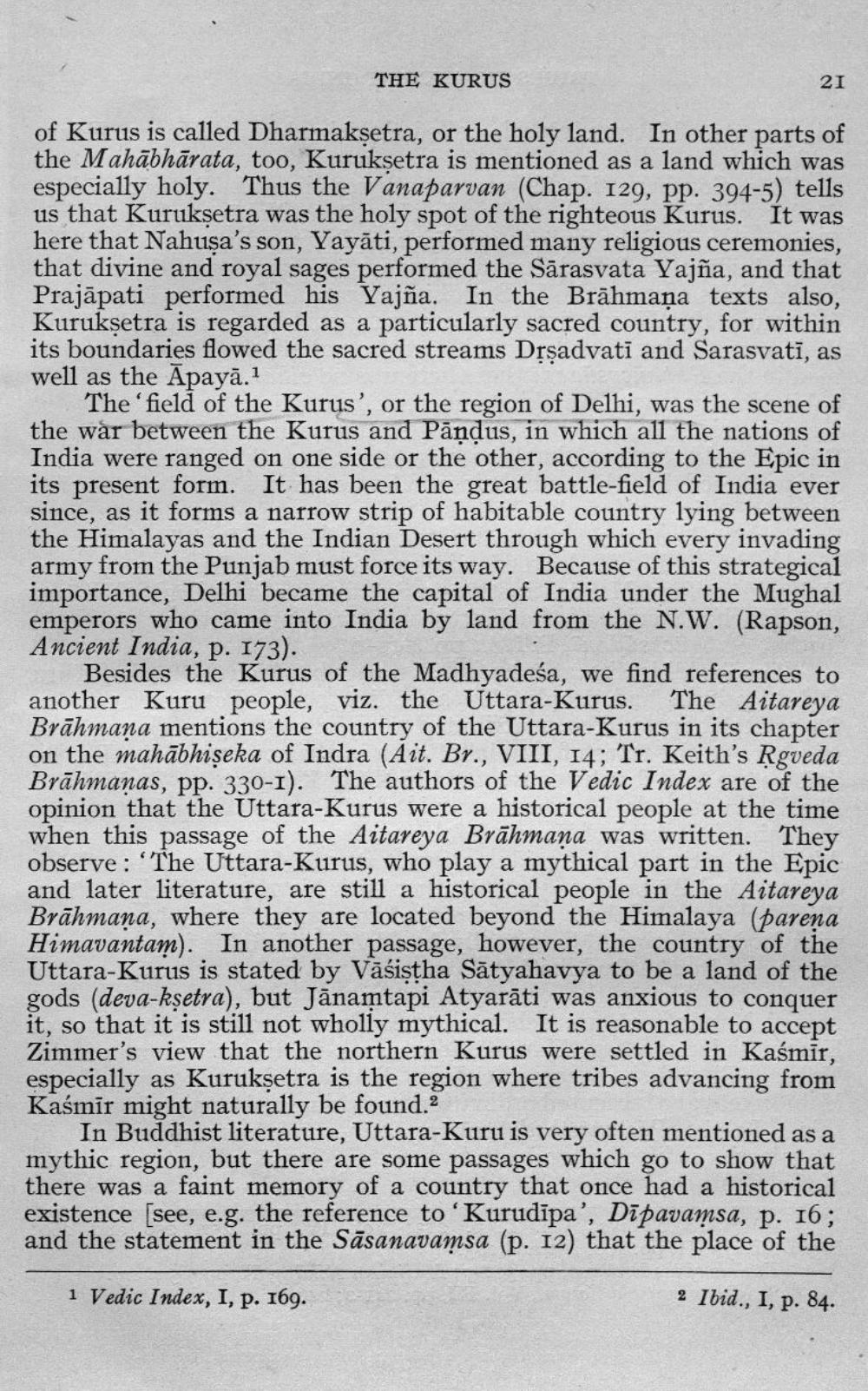________________
THE KURUS
21 of Kurus is called Dharmakşetra, or the holy land. In other parts of the Mahābhārata, too, Kuruksetra is mentioned as a land which was especially holy. Thus the Vanaparvan (Chap. 129, pp. 394-5) tells us that Kuruksetra was the holy spot of the righteous Kurus. It was here that Nahuşa's son, Yayāti, performed many religious ceremonies, that divine and royal sages performed the Sārasvata Yajña, and that Prajāpati performed his Yajña. In the Brāhmaṇa texts also, Kuruksetra is regarded as a particularly sacred country, for within its boundaries flowed the sacred streams Drşadvati and Sarasvatī, as well as the Apayā.1
The'field of the Kurus', or the region of Delhi, was the scene of the war between the Kurus and Pāņdus, in which all the nations of India were ranged on one side or the other, according to the Epic in its present form. It has been the great battle-field of India ever since, as it forms a narrow strip of habitable country lying between the Himalayas and the Indian Desert through which every invading army from the Punjab must force its way. Because of this strategical importance, Delhi became the capital of India under the Mughal emperors who came into India by land from the N.W. (Rapson, Ancient India, p. 173).
Besides the Kurus of the Madhyadeśa, we find references to another Kuru people. viz. the Uttara-Kurus. The Aitareva Brāhmana mentions the country of the Uttara-Kurus in its chapter on the mahābhiseka of Indra (Ait. Br., VIII, 14; Tr. Keith's Rgveda Brāhmanas, pp. 330-1). The authors of the Vedic Index are of the opinion that the Uttara-Kurus were a historical people at the time when this passage of the Aitareya Brāhmana was written. They observe: The Uttara-Kurus, who play a mythical part in the Epic and later literature, are still a historical people in the Aitareya Brāhmaṇa, where they are located beyond the Himalaya (parena Himavantam). In another passage, however, the country of the Uttara-Kurus is stated by Vāśiştha Sātyahavya to be a land of the gods (deva-kşetra), but Jānamtapi Atyarāti was anxious to conquer it, so that it is still not wholly mythical. It is reasonable to accept Zimmer's view that the northern Kurus were settled in Kaśmir, especially as Kuruksetra is the region where tribes advancing from Kasmir might naturally be found.2
In Buddhist literature, Uttara-Kuru is very often mentioned as a mythic region, but there are some passages which go to show that there was a faint memory of a country that once had a historical existence [see, e.g. the reference to 'Kurudīpa', Dīpavamsa, p. 16; and the statement in the Sāsanavamsa (p. 12) that the place of the
1 Vedic Index, I, p. 169.
2 Ibid., I, p. 84.




